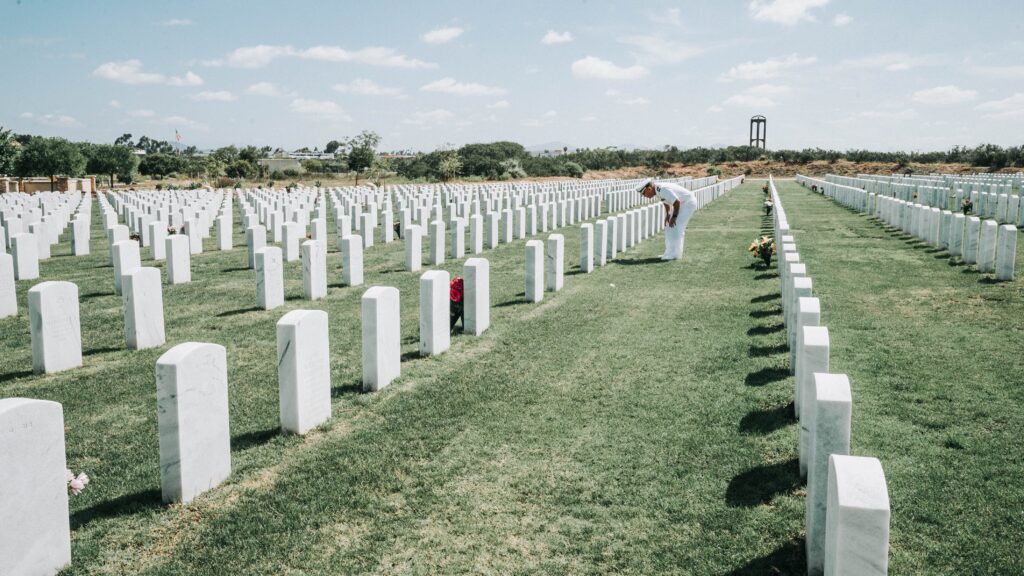
Choosing the final resting place for yourself or a loved one is a deeply personal decision that requires careful consideration. It is a way to honor and preserve the memory of the departed, and there are several factors to keep in mind when making this important choice. In this comprehensive guide, we will explore different burial options, discuss factors to consider, and provide valuable tips to help you make an informed decision.
Factors to Consider When Choosing a Final Resting Place
Selecting a final resting place involves various factors that should be taken into account. By considering these factors, you can ensure that you make a choice that aligns with your preferences, cultural and religious customs, and personal beliefs. Here are some key considerations:
Family and Personal Preferences
It is important to consider the preferences of your loved ones and yourself. Some families prefer to have their family members buried in the same cemetery or close by, creating a sense of unity and connection. Discussing your wishes with your family can help ensure that everyone is in agreement and that your final resting place reflects your family’s values and traditions.
Religious and Cultural Traditions
Religious and cultural traditions often play a significant role in the choice of a final resting place. Many people wish to be buried in a cemetery associated with their religious affiliation or a place of worship that holds special significance to them. Considering your religious and cultural customs can help guide you towards a burial option that aligns with your beliefs and values.
Location and Accessibility
The location of the cemetery is an important factor to consider. Some individuals prefer to choose a cemetery close to their residence, allowing for easier visitation by friends and family. It can also be meaningful to select a location that holds personal significance, such as a place where you spent significant time or had memorable experiences. Additionally, accessibility considerations should be taken into account, ensuring that the cemetery is easily reachable for family members and loved ones.
Burial Type: Traditional or Cremation
One of the primary decisions to make is whether to opt for a traditional burial or cremation. Traditional burial involves interring the body in the ground or a mausoleum, while cremation involves the transformation of the body into ashes. Both options have their own unique considerations and can influence the choice of a final resting place.
Environmental Impact
As awareness of environmental issues grows, many individuals are opting for environmentally friendly burial options. Green burials, also known as natural burials, are designed to have minimal ecological impact. These burials often take place in designated green cemeteries, where the focus is on preserving natural areas and avoiding the use of harmful chemicals. If environmental sustainability is important to you, exploring green burial options may be a fitting choice.
Financial Considerations
Financial considerations are also crucial when choosing a final resting place. Burial costs can vary significantly depending on the location, type of burial, and additional services or amenities. It is essential to have a clear understanding of the associated costs and explore different options that align with your budget.
Personal Connection and Meaning
Ultimately, the final resting place should hold personal meaning and significance. It should be a place where you feel a connection and can envision your memory being honored. Consider visiting potential burial sites to get a sense of the atmosphere, surroundings, and overall ambiance. Trust your instincts and choose a place that resonates with you on a deep level.
Types of Burial Options
When it comes to burial options, there are several choices to consider. Each option provides a unique way to memorialize and honor the departed. Let’s explore the different types of burial options available:
In-Ground Burial
In-ground burial is the most common and traditional form of burial. It involves interring the body in the ground, typically in a cemetery. In-ground burial can be chosen for both full bodies and cremated remains. Here are some variations of in-ground burials:
- Single Burial Plot: A single plot intended for the burial of one person or one urn.
- Double or Companion Plot: A plot that can accommodate two individuals, either side-by-side or in a double-depth arrangement.
- Family Plot: A larger space designed to accommodate multiple family members.
- Urn Plot: A smaller space specifically designed for the burial of cremation urns.
In most cases, cemeteries require the purchase of a burial or urn vault to protect the container from ground collapse. Additionally, many people choose to purchase a memorial marker or monument to commemorate the gravesite.
Above-Ground Burial
Above-ground burial options provide an alternative to traditional in-ground burials. These options are often chosen for their unique aesthetic appeal and practical considerations. Here are some common types of above-ground burials:
- Mausoleum Building: A mausoleum is a building designed to house caskets. It can be a private mausoleum reserved for a specific family or a community mausoleum where multiple individuals can be memorialized. Mausoleums offer personalization options and can be climate-controlled.
- Lawn Crypt: A lawn crypt is an above-ground structure with a drainage system. The casket is placed inside the crypt, and grass is planted over it, creating a natural and integrated appearance.
- Columbarium: A columbarium is a structure designed to hold cremation urns. It consists of niches where the urns can be placed. Columbariums can be standalone structures or part of a mausoleum complex.
Alternative Burial Options
In addition to traditional burial options, there are alternative burial methods that cater to specific preferences or unique circumstances. These options provide an opportunity for a more personalized and meaningful final resting place. Here are some alternative burial options to consider:
- Burial at Sea: For individuals with a connection to the sea, burial at sea offers a way to have their remains rest in the ocean. This option is particularly popular among sailors, mariners, and individuals who have a deep love for the sea.
- Home Burial: In some communities, it is possible to be buried at home or in a family cemetery. This option allows for a more intimate and personalized burial experience. However, it is important to check local regulations and requirements before considering home burial.
- Green Burial: Green burials focus on minimizing the environmental impact of the burial process. They often involve biodegradable materials and avoid the use of embalming fluids and traditional burial practices. Green cemeteries are designed to preserve natural areas and promote sustainability.
- Donation to Science: Some individuals choose to donate their bodies to science for research and educational purposes. After the donation, the body is typically cremated, and the remains may be returned to the family for memorialization.
Is Green Burial Helpful to the Environment?
As the world becomes more conscious of environmental issues, green burials have gained popularity. These eco-friendly burial options offer several benefits for both the environment and individuals. Let’s explore why green burials are considered helpful to the environment:
- Reduced Resource Consumption: Green burials minimize resource consumption compared to traditional burial practices. The use of concrete burial vaults, which require significant resources to produce and transport, is eliminated. This reduces the carbon footprint associated with burial practices.
- Cost Savings: Choosing a green burial can result in cost savings for families. By opting for simpler and more natural burial practices, families can avoid the expenses associated with traditional burial methods, such as embalming and elaborate caskets.
- Avoidance of Harmful Chemicals: Traditional burial practices often involve the use of embalming fluids that contain formaldehyde, a known carcinogen. Green burials prioritize natural preservation methods that eliminate the need for harmful chemicals, reducing the potential environmental and health risks.
- Conservation of Land and Wildlife: Green cemeteries are designed to preserve natural areas and promote the restoration of ecosystems. Traditional cemeteries often require the removal of trees and vegetation, disrupting local ecosystems. Green burials prioritize the conservation of land, allowing wildlife and natural habitats to thrive.
- Restoration and Sustainability: Green burials contribute to sustainability efforts by utilizing biodegradable materials that break down naturally over time. This allows for the restoration of the soil and promotes the growth of native plants and vegetation.
By choosing a green burial option, individuals can make a positive impact on the environment while honoring their loved ones in a natural and sustainable way.
Additional Considerations for Choosing a Final Resting Place
In addition to the factors mentioned above, there are a few additional considerations that can help guide your decision-making process:
Cemetery Rules and Regulations
Each cemetery has its own set of rules and regulations that govern burial practices. It is important to familiarize yourself with these rules before making a decision. Considerations may include restrictions on grave markers, decorations, visiting hours, and maintenance responsibilities. Understanding and adhering to these rules will ensure a smooth and respectful experience for all.
Cemetery and Plot Pricing
Burial costs can vary significantly depending on the location, cemetery type, and additional services. It is essential to consider your budget when exploring burial options. Research and compare pricing in different cemeteries to find an option that aligns with your financial situation.
Pre-Planning and Pre-Purchasing
Pre-planning and pre-purchasing a burial plot can provide peace of mind and alleviate the burden on your loved ones in the future. By making arrangements in advance, you have the opportunity to carefully consider your options, discuss them with family members, and make informed decisions at your own pace.
Visiting Potential Burial Sites
If possible, visit potential burial sites before making a final decision. Walking through the grounds and experiencing the atmosphere can help you envision yourself or your loved one in that space. Pay attention to the surroundings, maintenance, and overall vibe of the cemetery to ensure it aligns with your expectations.
Conclusion
Choosing a final resting place is a significant decision that should be approached thoughtfully. By considering factors such as family preferences, religious and cultural traditions, location, burial type, environmental impact, and personal connection, you can make an informed choice that reflects your values and wishes. Whether you opt for a traditional in-ground burial, an above-ground option, or an alternative burial method, remember that the most important aspect is creating a meaningful and lasting tribute to your life or the life of your loved one.







